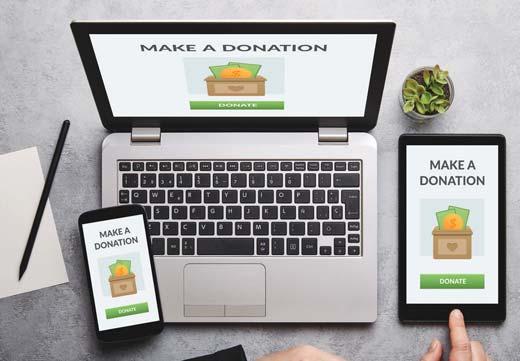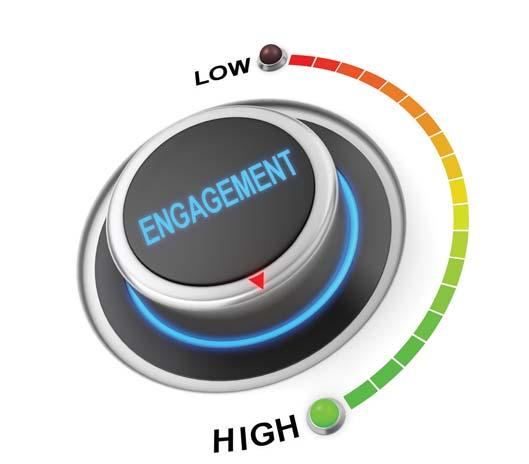
5 minute read
MARKETING Think like a charity when it comes to customer stewardship

with DOUG MACMILLANMarketing
Advertisement
Doug MacMillan is president of The Letter M Marketing in Guelph, ON. To reach him, email doug@letterm.ca.
Rallying your Rallying your people people

I watched our local Big Brothers shift from in-person to virtual youth mentoring in mere hours and it involved a lot more than downloading Zoom. We witnessed 15 poverty relief charities band together within three weeks with an incredibly organized food delivery program that has made the difference between eating and not eating for people in our community. They’ve done this without a grumble or whine (despite frequent calls from businesses that needed to pull promised funding), but with positivity, passion and incredible strength. They rallied, and they got it done. Rallying their people meant connecting with valuable donors and supporters in their time of need. Nearly every charity needed money or another form of help, and they needed it fast. They were able to call on those relationships and the trust they share to help them meet urgent needs.
Think like a charity when it comes to customer stewardship
I’ve been fortunate over my career to work with dozens of charities across Canada. I’ve volunteered on the front lines and sat on the boards. My agency has executed high profile public awareness campaigns, created messaging and branding strategies, and sponsored its fair share of galas, golf tournaments and fundraisers. All proud moments and certainly among my most fulfilling professional and personal experiences.

Over those years, I can no longer count the number of times I have heard someone say “charities need to start thinking more like a business!” It was a bit of a broken record about 15 years ago and it still is today. There is validity in the comment: some charities don’t always set effective key performance indicators (KPIs) to measure the return on their investment in different programs. Applying a for-profit lens to a non-profit organization can support improved sustainability and revenue streams.
At the same time, businesses can learn a thing or two from charities, too, and that record hasn’t been played enough in my opinion. Their resiliency and ability to “pivot” (that word…) is as nimble and smart as any business story I’ve read this year.
Relationship building Relat
What charities do exceedingly well–better than nearly every business Wha
I encounter, certainly including mine–is what they call “stewardship.” I enc Stewardship, by definition, means to “take care of something” and that’s Stewa exactly how they view it: they take care of their donors and volunteers exac with care and attention. w
I believe if companies with customers looked at their communication as “stewardship” and followed some of the same co practices, their connection with those customers–and ensuing loyalty prac from those customers–would be stronger for it. This has been proven fro in spades during the pandemic, when customers were cautious about in s safety. safe
Customers were much more likely to invite a contractor into their home when Customers they already had a strong, trusting relationship. The relationship made them they already
less skeptical when contractors promised to follow ed to follow strict protocols. I watched HVAC and plumbing lumbing contractors draw on that ‘relationship equity’ quity’ and rebound faster during the pandemic ic than those who haven’t invested in their r customers to the same degree.
Charities follow a proven process when it comes to donor stewardship; a process that can easily be adopted as customer stewardship in the private sector. They create richly detailed annual al stewardship calendars that identify every ry single touchpoint, and they often measure ure the effectiveness of each of their efforts. These s. These schedules include things such as personal telephone naltelephone calls with their highest value donors at the beginning of the relationship, and on an ongoing basis.
They communicate frequently via email, personal hand-written notes and letters, or quarterly bulletins. They spotlight donors on their social media feeds, taking the time to tell their story and underscore why their relationship is important to them. They send birthday or anniversary cards, small unexpected gifts and give them “front of the line” access to their most desirable auction items or event swag.
Charities excel at storytelling. They hire gifted writers to structure compelling and strategic narratives about their work, and the donors and volunteers they celebrate. They humanize their work, and use stories to help prospective donors see the value in getting involved. They shoot emotional videos that go viral and many do it on a shoestring budget.

Engage your En customers cu
Most charities are very M good at being trans-g parent and honest p about what they are a up to, the challeng-u up es they face, and the e es t help they need. They are hel lp t expected to be open and expec cte accountable; businesses should b bl similarly expect to be accountable to their customers. All too often, we bury our business problems so our customers don’t see weakness. I’m keen to share a few of our challenges so customers understand, openly and honestly, how things are and what they can do to help. The present supply chain issues are a good example. Some companies tried to position themselves as the hero that will get it no matter what, then face the consequences when they could not. Others were honest from the beginning and worked with clients to find an alternate solution. Those customers will last longer, guaranteed. Perhaps most importantly, I’ve noticed charities aren’t afraid to draw on those relationships to help make their organizations better. Their strategic planning process is robust and includes extensive engagement with their donors and volunteers, in essence to ask them to help shape their mission and how to execute it. Our customers are an incredibly powerful resource that private companies do not access nearly enough when looking to the future. Who doesn’t love to be asked for an opinion?










